Your amplifier is not a common emitter, but rather an emitter follower. That is why it doesn't work: it does not amplify voltage. The small voltage swing of the microphone is placed across the emitter resistor + LED. The only thing that the circuit does is to provide the current delivery.
By the way, it's not realistic to model a microphone as a voltage source, because it has internal impedance. This matters because unlike a perfect voltage source, a real mic cannot impress its full voltage onto the input stage. Due to the low impedance of these designs, they can only work with a low impedance microphone (two to three digit ohms).
Try this small modification to your circuit. This is a common emitter. The load is on the collector side. I fiddled with the values so that the LED current oscillates between close to 0 to as high as 3 mA. Try a time-domain simulation up to 0.005 seconds in 0.0001 second increments, watching the diode current.

simulate this circuit – Schematic created using CircuitLab
Two-stage version based on a continuation of your idea. Here we have separate voltage amplification stage followed by a PNP output stage to drive the current to the LED. This one turns the positive cycles of your wave into 20 mA current peaks through the LED. The LED is cut off on negative cycles:

simulate this circuit
I have increased the coupling capacitors because the impedances are quite low in the circuit. The D4 diode just provides a small level shift. Without it, the voltage swing going into Q2 doesn't quite reach high enough toward the 9V rail to cut the transistor off, leaving a quiescent current through the LED. I wanted it shut off.



